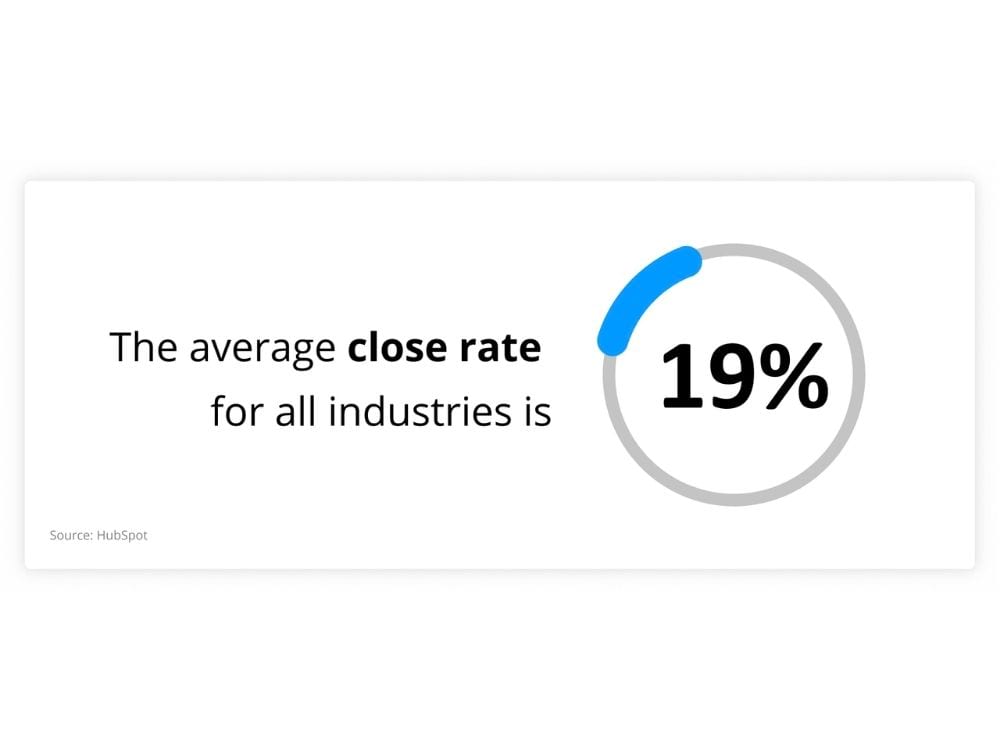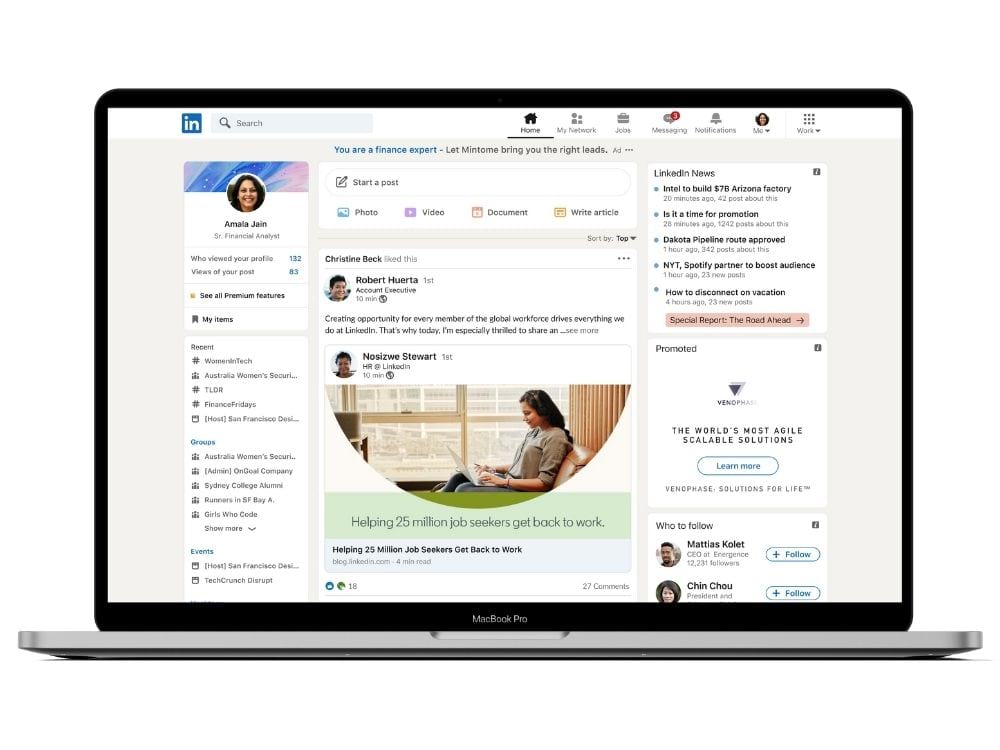You’ve got your customer in front of you and your sales demo is ready to go. You hit the play button and start your pitch but somewhere along the way, you’ve lost your customer’s attention.
So, what’s the problem? Is it the product demo, or the pitch, or are you not targeting the decision-maker? Why are they not interested?
B2B sales have changed drastically over the past year due to the pandemic and the sales or product demo environment has become a crucial tool for sales teams. Nailing the sales demo is the difference between winning and losing deals. So, what makes a sales demo successful?
Goals of the Demo
Firstly, what are sales demos, or product demos? Here’s a quick definition: it is the process of demonstrating a product, or service, as part of the sales cycle to a potential customer to make a sale.
When presenting a sales demo, tell them about the product, detail its features and capabilities, inform how many have been sold; ok, stop right there. Here’s a little secret; a sale demo isn’t just about your product. It is a tool to create a conversation, build a rapport, develop a relationship and present a solution to the prospect’s problem.
The goal of a successful sales demo is about the conversation. The idea is to draw out of your prospects what the problem is; explain how the product’s functionality, or favorite features, can solve their problem to secure the sale. For example:
- Identify the potential client’s problem and the reasons why they are asking for a demo.
- Demonstrate how your product can address their pain points.
- Close the deal with the prospect believing that your product will solve their problem. They need to feel that you are credible, can be trusted and will deliver.
Why Demos Fail

With 50% of leads believing sales reps are pushy and only 3% of buyers trusting salespeople, it’s a real challenge but also a real opportunity.
70% of leads want to watch a killer sales demo to help them make a decision, so why aren’t conversion rates more successful? There are a variety of reasons why and usually, it’s not down to the sales demo itself. Let’s look at some of the mistakes being made when presenting a sales demo.
- Too much focus on the product and not enough focus on the customer’s pain points and how they can be resolved. It’s easy to just list the features of the product and expect the customer to know what you’re talking about.
- Not enough research into your customer or their needs leads to a lack of personalization. If a demo is not tailored to the customer, where’s the need for them to sit, listen and watch your video? Developing a buyer persona is a good way of showcasing your product’s benefits that directly relate to customers’ problems.
- It’s too long and there’s too much jargon. Generally, any video over 15 minutes is too long. Make the sales demo concise and to the point. There’s no need to ‘teach’ your customer how to use the product at this stage. It must also be quick and easy for your customer to participate in the demo, i.e. use demo logins. In some cases, it’s acceptable to add more technical language but generally, keep it simple. Ask their opinions, get their feedback and read the signs to identify their interest.
- The B2B lead is not necessarily a qualified B2B lead, i.e. the customer doesn’t think they have a problem that needs solving, they are not looking for a new product or solution, and they’ve been pressured into the sales demo. If the customer isn’t interested in the product in the first place, it’s highly unlikely they want to sit through a sales demo.
- A lack of follow-up calls. When 60% of customers say no four times before saying yes, and 48% of salespeople not making at least one follow-up call, it’s not surprising so many sales demos fail.
Sales Demo Best Practices
So, how should a sales demo be delivered and what can be done to have a greater chance of converting a sales demo into a customer?
- Customize the sales demo – no one customer is the same, they’re individuals. Tailor your slide deck to the prospect which highlights the product’s features to meet the prospect’s needs.
- Build the sales demo around the prospect’s problem – a proper sales demo pitch isn’t about your product. It’s about how it can solve the customer’s problem.
- Practice, practice and practice again! It’s much more than a presentation and you don’t want to make mistakes on demo day. It is a tool that opens up opportunities.
- Test, test and test again – it is just as important to test the demo; the last thing you want happening during your pitch is a failure on the demo.
- Close the deal – the average close rate across all industries is a staggeringly low 19%, according to HubSpot. Competition in the market is fierce; closing the deal is not only important to the qualified lead, it’s crucial for the salesperson, too.

A key aspect of presenting a sales demo and closing the deal is body language and tone of voice. 55% of a conversation is non-verbal communication, 38% is the tone of voice and just 7% are the words spoken; that tells its own story. Whether it’s an online Zoom demo or face-to-face, how you express yourself through body language and the tone you use is crucial.
Eye contact tops the list; it isn’t something you can fake either. Never be shy from making eye contact with your customer. Looking away or avoiding eye contact will only infer to the customer a lack of interest, a distracted mind or a ‘just can’t be bothered’ attitude.
Make sure you smile. This will also be reflected in your eyes and tone of voice. Making the right first impression is a big step towards building a trusting relationship with your customer.
Of course, conducting a demo via video is much more of a challenge but that doesn’t mean it can’t be successful.
Do your homework
Great! You’ve got a qualified lead that wants a demo of your product. Don’t think you’re halfway to closing the deal; you’re not. The first step is doing your homework. Find out as much as you can about the background of the company through their website, press releases and social media platforms.
Study what they sell, who their competitors are in the market, who the key decision-makers are, and most importantly, is your product a good fit for the company. The more of an insight you can learn, the more chances there are of a successful outcome.
If this isn’t the first time you’ve spoken to the company, look back through your notes and emails. See who you’ve spoken to and if you’re speaking to someone new, look them up. The more you can qualify the lead before the sales demo, the higher the rate of success.
This is a golden opportunity to secure a sale. If you know the prospect’s pain points, is there a favorite feature that will help the customer?
Pre-call preparation

As Benjamin Franklin said, “By failing to prepare, you are preparing to fail.” Put yourself in the right mindset. The more prepared you are in terms of ensuring all the technical aspects are working correctly, such as your computer and the internet. The better your mindset is going to be.
Practice makes perfect; run your sales demo at least three times before presenting it to the prospect. Re-create the sales demo setting; is it in the customer’s office, in your office, or are you working from home and presenting a demo via video using a cloud-based service? Wherever it’s taking place, ensure it works effectively and you have a script, or ‘story’, to present a consistent message.
As well as a script, consider setting an agenda to ensure the sales demo doesn’t go off-course. The agenda slide, which can be a bullet-pointed slide, needs to back-up the script and walk you through the demo.
Build a rapport
Customers buy based on trust and the relationship they have with the salesperson. The quicker you can establish a rapport with them, the more relaxed and open they will be. Demonstrate that you are knowledgeable about their company and understand their problem. Use your body language and tone of voice to build trust and empathy.
Dive into their needs
So, you know the customer’s problem and you know your product can solve it. But how can you persuade the customer your product is the right one? Discover their pain points; it could be financial, it could be productivity, it could be sales, it could be people.
Ask questions of the prospective customer to learn more about their problem, about the company, and what outcome they want by resolving the problem. Once you have this information, you can demonstrate how your product will fit their business, but don’t overdo the in-depth, technical questions at this stage.
Show how your product has helped similar companies
Demonstrating how your product will solve their problem is one thing; convincing the customer is another. Customers buy on recommendations. Incorporate examples of where your product has been successful for other companies with similar problems.
Encourage them to ask questions

Every sales demo should be a two-way conversation. Encourage your prospect to ask questions throughout the demo, although try to avoid questions that are in-depth or are technical questions at this stage. Anticipate the common questions that may arise, and be ready to answer any trick questions.
Don’t be afraid of saying you don’t know the answers. Find out and report back. The more customer interaction you can generate, the more likely the prospect will believe in the product.
Closing and next steps
A tip; what you said to your customer 10 minutes ago may have gone out of their head by the end of the demo so do a demo recap. Spend the last 5 minutes summarising the product, emphasizing the points where it will benefit the customer. Explain why they need your product and ask if there are any follow-up questions.
Talk through the next steps to take in the sales cycle. Establish if they agree the product is the right fit for their company and the problem. Find out if they are the decision-maker or if they need to talk to another party. If they aren’t the decision-maker, arrange a time to speak to the decision-maker alongside your contact.
What is a Decision Maker and Understanding Their Role in the Decision-Making Process
You can make all the sales demos in the world but unless you are presenting to the decision-maker in the company, you aren’t going to get far.
The decision-maker is the person that makes the final decision, be it tactical, operational or financial. You may find in some companies that there are decision maker influencers. For example, a production manager may make a purchase recommendation to the head of operations regarding machinery.
How to Find the Decision Maker
Creating a buyer persona will help to identify the decision-maker in the company. Once you’ve created a persona, ask a series of qualifying questions to determine who is most likely to make the final buying decision. Scheduling time with decision-makers is a key part of the sales cycle.
Getting to Know the Decision Maker

Remember, it’s the decision-maker who will decide to purchase or not, no matter how much a manager believes your product is the right solution. Do your research and find out about them. LinkedIn is a good source of information. Most professionals used the B2B social media platform; it’s an ideal place to study their profiles.
When and How to Involve Decision Makers in the Sales Process
You will often find that your first sales demo to the company isn’t with the decision-maker. Often there is a ‘gatekeeper’ in between and the protocol is to connect with them first. The better the relationship with the gatekeeper, the more likely you’ll be pitching to the decision-maker.
Tips for Selling to Multiple Decision Makers
You may also find that you are pitching to more than one decision-maker, i.e. the director of operations and the director of finance.
- Make sure the scheduling time for the sales demo is convenient for everyone, and there is nobody that may arrive late or leave early.
- Aim to build a trusting rapport with each decision-maker through a short, informal introduction as they arrive at the meeting.
- Ask what their process is to reach the final purchasing decision to discover who signs the dotted line.
- Whilst keeping the meeting focused and on track, encourage questions and active participation in the sales demo.
- Divide your attention equally between each decision-maker to address their concerns and questions accordingly.
- Follow-up with each decision-maker individually after the sales demo. If possible, before the meeting closes, set a follow-up date with each person.
Nailing the sales demo is just one part of closing a deal; the other half is down to the salesperson. A successful sales demo will show the potential customer how your product will relieve their pain points and solve their problem. But there is an art to converting a potential customer into a winning deal.
The sales demo is a tool, not the answer. Master the skills of identifying qualified leads, tailoring the demo, targeting the right decision-maker and create a rapport with your customer. Then you’ve nailed the sales demo and increased sales.
Mastering the sales demo takes practice, and practice requires leads. If you need more leads to keep your sales team busy, check out Bant’s lead generation services.
FAQs
When do you deliver a sales demo?
A sales demo is presented to a qualified B2B lead, i.e. a prospective customer that is interested in your product to potentially solve a problem for them.
What makes a good software demo?
Ensure the demo is focused on the customer and not on the product. Whilst it’s important to include an overview of your product and its key features, a software demo isn’t about teaching the potential customer how to use it. They want to know how the product is going to solve their problem. The more interactive you can make the demo, the better the buy-in from the prospect.
Why is a demo important in sales?
Successful demos can be the difference between closing the deal and walking away with nothing. It is an excellent tool that helps to demonstrate how your product or service can solve the customer’s pain points, thereby improving their success.
How do you introduce a demo?
A demo is a tool to help a salesperson convert a B2B lead into a customer. When meeting a prospective customer, introduce yourself and your company first to start to build a rapport. Give them a summary of your product or service before diving into the nitty-gritty using the sales demo. Remember, most customers buy based as much on the relationship they develop with the salesperson as the product or service itself.
What is a demo page?
It is an online landing page that summarises your product or service. Also known as a lead capture form, it is the page that a decision-maker will land on to find out more about how your product or service will solve their problem. The call to action on the demo page is the prospective customer clicking a link to request a demo.

